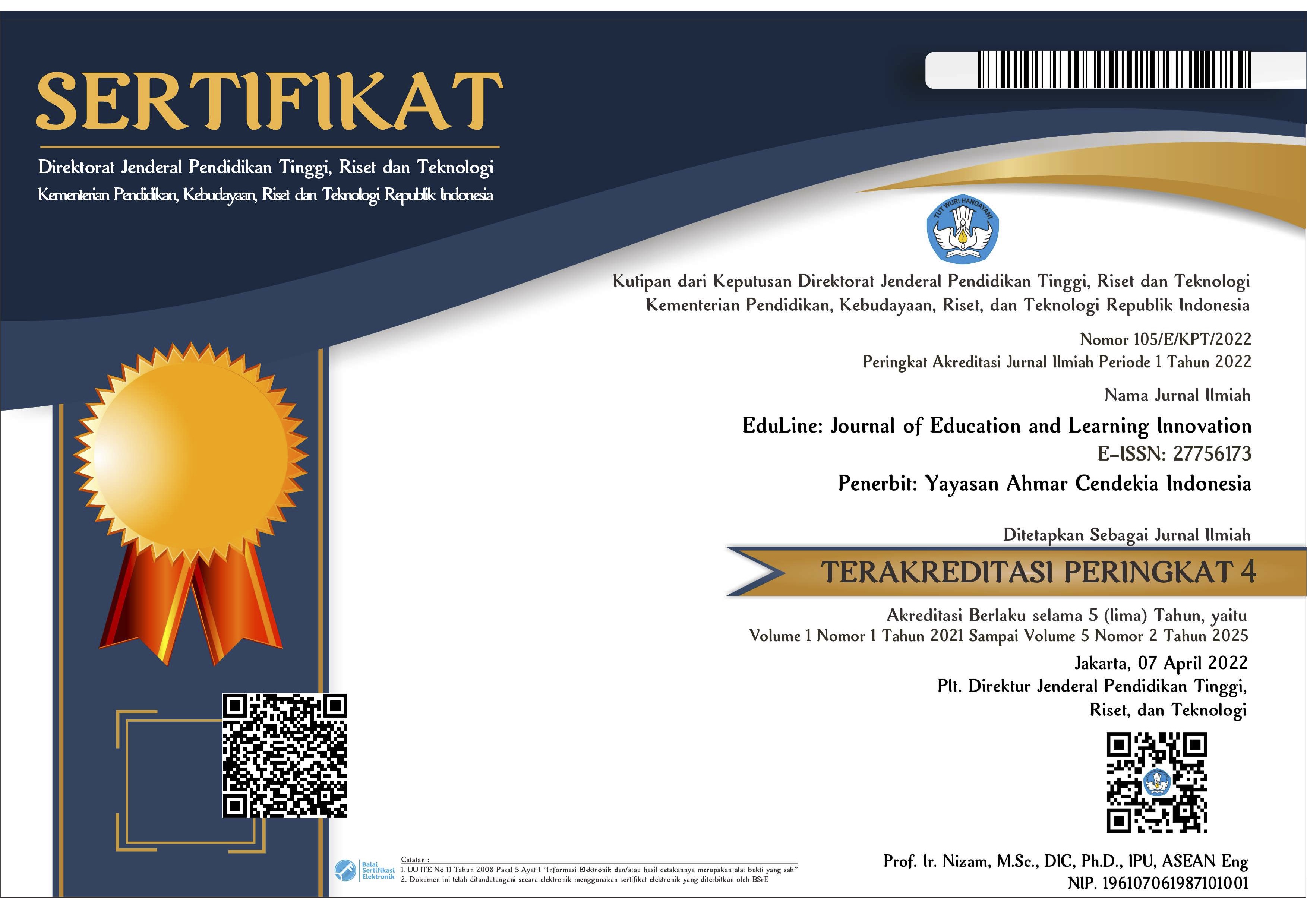Students’ Perception of the Presentation Activities in Online Speaking Class
 Viewed = 0 time(s)
Viewed = 0 time(s)
Abstract
The objectives of this research were to find out the benefits of presentation activities in online speaking classes. Data were collected using a questionnaire that collected a five-point Likert scale to gauge the students’ perception use of presentation activities in online speaking classes. The population of this research was eleventh-grade students of senior high school 4 Sidrap academic year 2021//2022 through random sampling technique and XI IPA 1 was selected as the sample of this research. The research finding showed that the utilization of presentation activities gave some benefits to the students as follows: easy understanding of the material; increased students’ motivation; focus deeper on learning; and Increased collaboration. It could be concluded that the utilization of presentation activities in online speaking class benefited the students in the eleventh grade of SMAN 4 Sidrap.
References
Ally, M. (2008). Foundations of Educational Theory for Online Learning: Theory and Practice of Online Learning.
Atmowardoyo, H., & Sakkir, G. (2021, November). The Development of Language Learning Theory Based on Best Practice: A Literature Review. In Proceedings of the Tenth International Conference on Languages and Arts (ICLA 2021)(pp. 172-184). Atlantis Press.
Chivers, B. & Shoolbred, M. (2007). A Students Guide to Presentation: Making Your Presentation Count. London, England: SAGE Publication Inc.
CISCO Systems (2001). Reusable learning object strategy: Designing information and learning objects through concept, fact, procedure, process, and principal templates. Version 4.0. Internet Learning Solutions Group, CISCO Systems, Inc.
Clark, D. (2010) Big Dog’s Leadership Page-Presentation Skills.
Depdikbud. (1985). Tugas Manajemen kelas dan Metode Mengajar. Bandung: Kanwil Provinsi Jawa Barat.
Dollah, S., Sehuddin, M. F., & Sakkir, G. (2021). Motivating EFL Learners to Write Using Padlet Application. ELT Worldwide: Journal of English Language Teaching, 8(2), 240-254.
King, Jane. (2002). Preparing EFL Learners for Oral Presentations.
Lubis, N. S. W. (2018). The Effectiveness of Using Oral Presentation in Improving Students’ Speaking Ability (An Experimental Research at Second Grade of SMA N 1 Cikeusal, Serang) (Doctoral dissertation, Universitas Islam Negeri "Sultan Maulana Hasanuddin" Banten).
Nunan. (2001). Language Teaching Methodology. London: Longman.
Richards, J. C. (2008). Teaching Listening and Speaking. New York: Cambridge University Press.
Richards, J. C., &Willi A. Renandya. (2002). Methodology in Language Teaching: An Anthology of Current Practice. New York: Cambridge University Press.
Sakkir, G., Abduh, A., Andrew, M., Muslim, A. B., & Yasdin, Y. The Challenges Faced by Teachers in Teaching English in The Current Curriculum Change. In Seminar Nasional LP2M UNM.
Sakkir, G., Dollah, S., & Ahmad, J. (2020). Favorite e-learning media in pandemic covid-19 era. Jurnal Studi Guru Dan Pembelajaran, 3(3), 480-485.
Sara, B. (2015). Investigating the Effects of EFL Students’ Self-Confidence on Their Oral Performance. (Master’s Thesis). Biskara University, Republic of Algeria.
Tarigan, Hendri Guntur. (1990). Berbicara Sebagai Suatu Keterampilan Berbahasa. Bandung: Angkasa
Thornbury, S. (2005). How to Teach Speaking. England: Pearson Educational Limited.
Widdowson, H. G. (1979). Teaching language as a communication. Oxford: Oxford University press.
Widdowson, H. G. (1985). Exploration in Applied Linguistic. Oxford: Oxford University Press.
Copyright (c) 2022 Geminastiti Sakkir, Ahsan Musri S, Syarifuddin Dollah, Jamaluddin Ahmad

This work is licensed under a Creative Commons Attribution-NonCommercial-ShareAlike 4.0 International License.

 https://doi.org/10.35877/454RI.eduline1074
https://doi.org/10.35877/454RI.eduline1074







